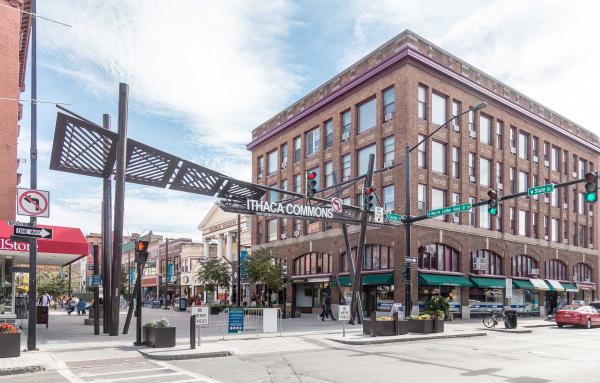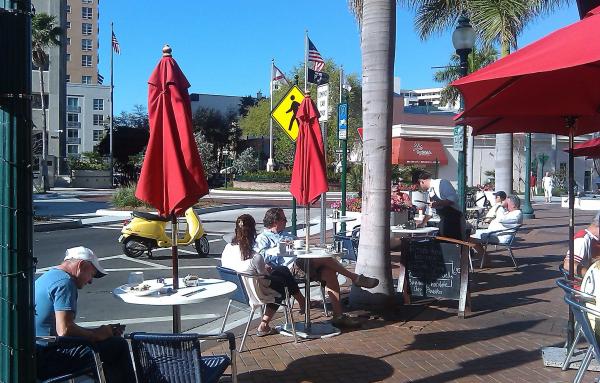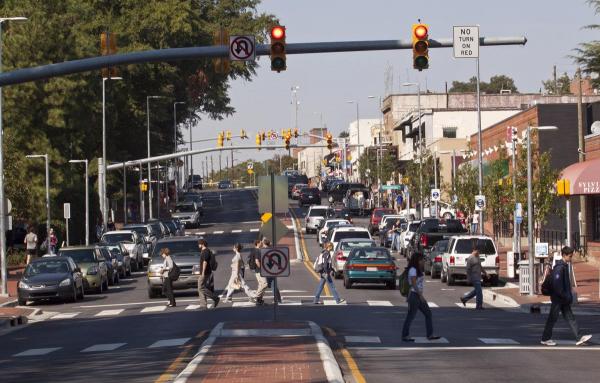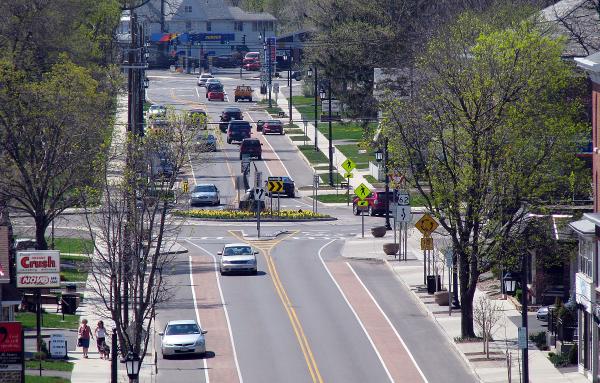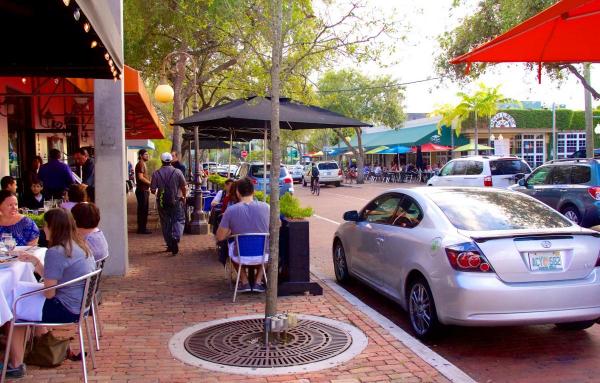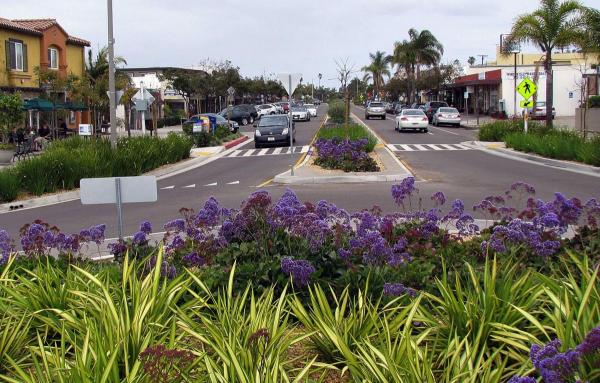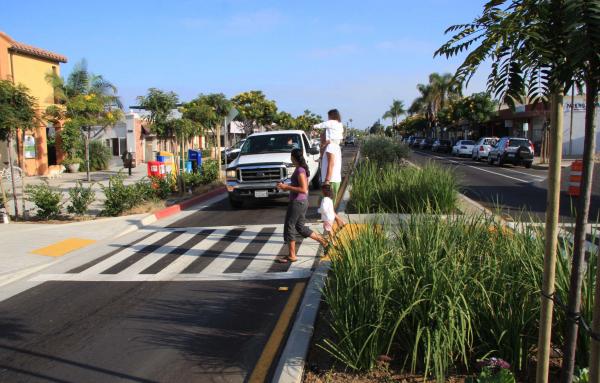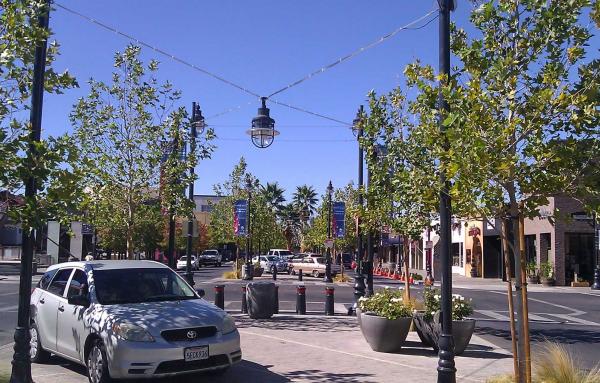Streets
Historic street grids can handle greater traffic of all kinds—so why aren’t we building more of them?
Well-designed urban roundabouts solve traffic delay problems while slashing the kinetic energy of motor vehicles in intersections, improving safety and allowing for placemaking.
A pedestrian fatality spurred a transformation of a thoroughfare in Raleigh, linking a college campus to neighborhoods.
Roundabouts and reductions in lane widths helped to restore civic life along a US highway in a western New York village.
South Miami, Florida, has completely transformed since 2000—largely following the context-sensitive transformation of its main street.
Why street design has not kept pace with automotive safety improvements, and what you can do about it.
A breakthrough design on La Jolla Boulevard in San Diego cuts crashes by 90 percent and gives local business a shot in the arm.
In Boston, a Transportation Department guide lays out a vision for streets as shared public spaces.
Streetscape improvements have helped bring back an 18-hour-a-day character to the corridor. Crime has dropped and property values have risen.
An esplanade park at the center of a Cincinnati neighborhood had been whittled away. Returned to its former glory, the square has revitalized business and boosted safety.
Lancaster, California, has lit the local economy and secured a social heart with one transformative street project.
Here are streets that are more than just conduits for cars—they are places that support social and economic life, walking, bicycling, and transit.
